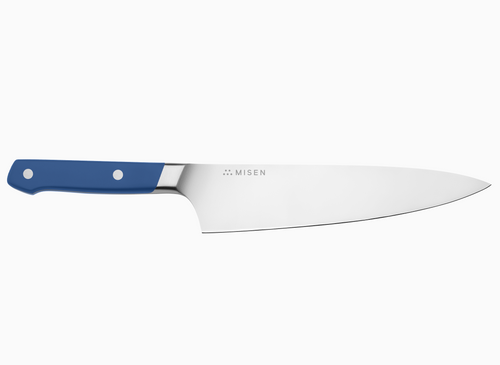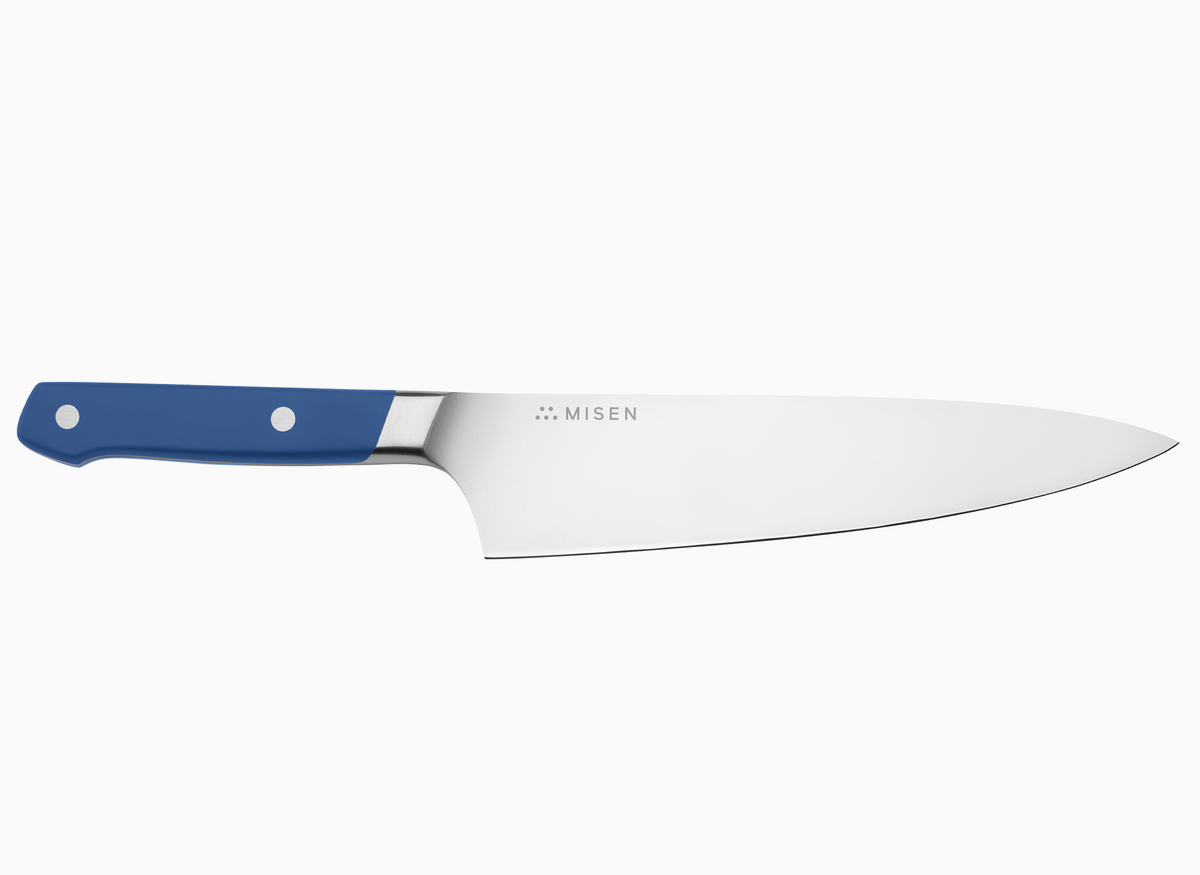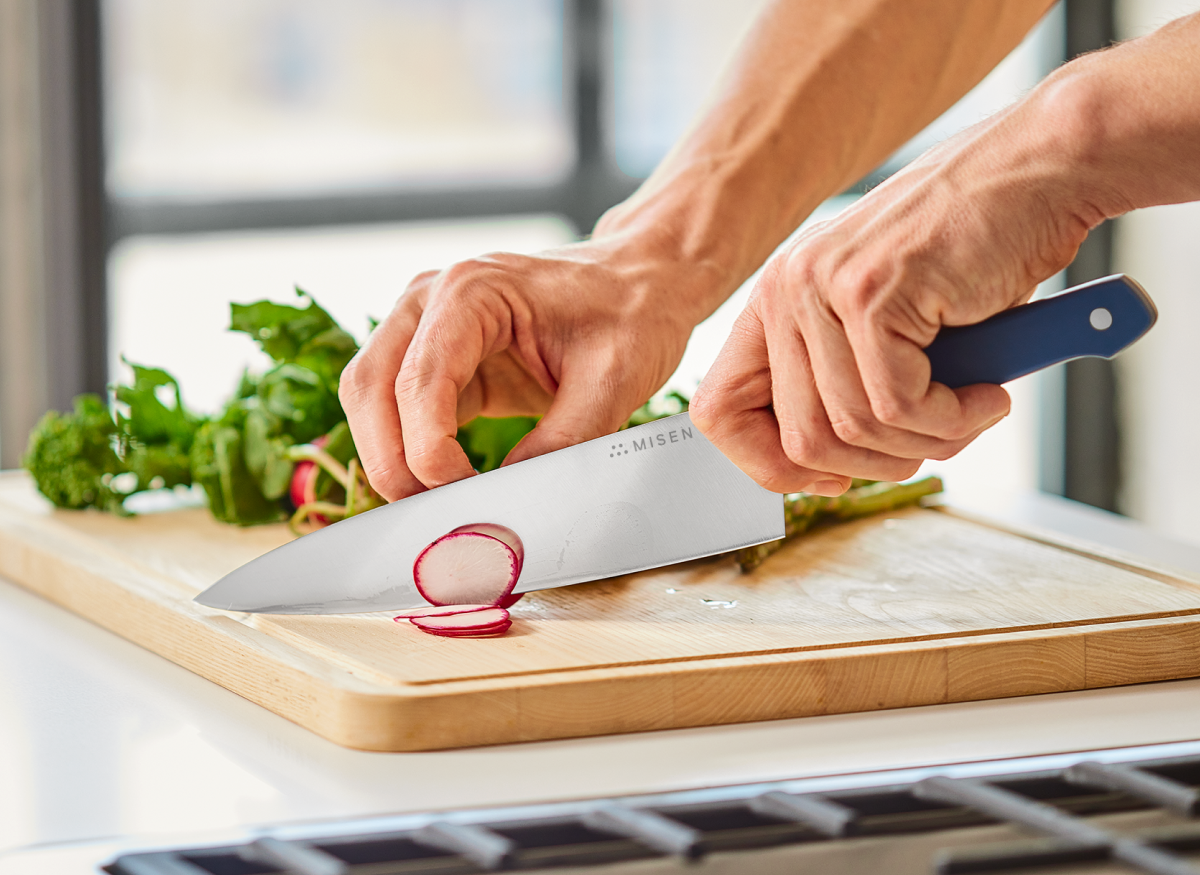The Ultimate Guide to Cleaning Enameled Cast Iron

Enameled cast iron cookware combines excellent heat retention with a durable, easy-to-clean surface. This guide covers everything you need to know about caring for your enameled cast iron, from daily cleaning to tackling tough stains. With proper maintenance, your cookware will last for years to come.
Understanding Enameled Cast Iron
What is enameled cast iron?

Enameled cast iron is a versatile cookware material that combines the excellent heat retention of traditional cast iron with a smooth, non-reactive enamel coating. This coating, typically made of glass particles fused to the iron surface at high temperatures, creates a durable and easy-to-clean cooking surface. Unlike bare cast iron, enameled versions don't require seasoning and can handle acidic foods without concern for iron leaching or flavor alteration[1].
The enamel coating comes in various colors, adding aesthetic appeal to kitchenware. However, it's important to note that while enameled cast iron shares many benefits with its uncoated counterpart, it does have some limitations. For instance, it generally has a lower maximum temperature tolerance and is more prone to chipping or cracking if mishandled[1].
Benefits of enameled cast iron cookware
Enameled cast iron cookware offers several distinct advantages. One of its primary benefits is the ease of maintenance. Unlike traditional cast iron, enameled versions don't require seasoning, as the enamel coating protects the iron core from rust[2]. This protective layer also makes cleaning a breeze, with a smooth, glazed finish that's easy to wipe down and less prone to food trapping.
Another advantage is the range of vibrant colors available, allowing these pieces to double as attractive serving dishes that complement kitchen décor[2]. The light-colored interior of many enameled cast iron pans also makes it easier to monitor food as it cooks, providing a clear view of browning and moisture levels[2].
Enameled cast iron is also highly versatile, capable of handling acidic foods without concern for iron leaching or flavor alteration, unlike its traditional counterpart[1]. This versatility extends to various cooking methods, from stovetop to oven use, making enameled cast iron an excellent choice for a wide range of recipes.
Common misconceptions about cleaning enameled cast iron
Several misconceptions surround the cleaning of enameled cast iron cookware. One prevalent myth is that soap should never be used, as it might damage the seasoning. However, unlike traditional cast iron, enameled cast iron has a non-reactive surface that can withstand mild soap without harm[3].
Another common misunderstanding is that enameled cast iron requires special care and is difficult to maintain. In reality, it's quite durable and easy to clean with regular use[4]. Some believe that acidic foods will immediately ruin the enamel coating, but brief cooking with acidic ingredients is generally safe.
The notion that steel wool is always off-limits for cleaning enameled cast iron is also misguided. While it's best to avoid abrasive materials for routine cleaning, stainless steel wool can be safely used on vitreous enamel for stubborn stains without damaging the surface, though it may cause minor scratches[5].
Essential Cleaning Tools and Materials
Recommended cleaning products for enameled cast iron
When it comes to cleaning enameled cast iron cookware, simplicity is key. The most effective and gentle cleaning method involves warm water, mild dish soap, and a non-abrasive pot brush or soft sponge[6]. For stubborn stains or stuck-on food, a paste made from baking soda and water can be applied with a soft sponge in a circular motion, acting as a mild abrasive without damaging the enamel[7].
In cases of particularly resistant stains, hydrogen peroxide mixed with baking soda can be heated in the cookware to create a bubbling solution that lifts discoloration[7]. For those seeking a commercial option, some brands offer specialized pot and pan cleaners designed to maintain the enamel surface while tackling tough stains[6].
It's crucial to avoid abrasive materials like steel wool or metal utensils, as these can irreparably damage the enamel coating. Similarly, harsh chemicals such as bleach should be avoided to preserve the integrity of the cookware's surface[6].
Tools to avoid when cleaning enameled cast iron
When cleaning enameled cast iron, it's crucial to avoid certain tools and methods that can damage the protective enamel coating. Metal scrub brushes and steel wool are absolute no-nos, as they can easily scratch and chip the enamel surface, compromising its integrity and appearance[8].
Similarly, abrasive scouring pads should be avoided in favor of soft sponges or dishcloths. Harsh cleaning products, particularly those containing bleach, can dull the shine of the enamel and potentially weaken it over time[7].
It's also important to steer clear of sudden temperature changes, such as plunging a hot pan into cold water, as this thermal shock can cause the enamel to crack. While some enameled cast iron pieces are labeled as dishwasher-safe, it's best to avoid the dishwasher altogether to preserve the cookware's longevity and appearance.
Creating homemade cleaning solutions
Creating homemade cleaning solutions for enameled cast iron is an effective and economical way to maintain your cookware. One popular method involves using baking soda, a versatile household ingredient. For stubborn stains, create a paste by mixing baking soda with a few drops of water. Apply this paste evenly to the affected areas and let it sit overnight, allowing the mild abrasive properties to work their magic[9].
Another powerful solution combines hydrogen peroxide with baking soda. Pour enough hydrogen peroxide to cover the bottom of the cookware by at least ½-inch, then add ¼ cup of baking soda. Heat the mixture on the stovetop until it bubbles, creating a potent cleaning action that can lift even the toughest stains[7].
For a gentler approach, simply boil water with a few spoonfuls of baking soda in your enameled cast iron pot. This method is particularly effective for loosening burnt-on food residues, allowing you to easily scrape them away with a wooden spoon[9].
Step-by-Step Cleaning Process
Allowing the cookware to cool before cleaning
Allowing enameled cast iron cookware to cool before cleaning is a crucial step in maintaining its longevity and preventing damage. The sudden temperature change from hot to cold can cause thermal shock, potentially leading to cracking or chipping of the enamel coating. It's essential to let the cookware cool naturally on the stovetop or in the oven before attempting to clean it.
This cooling period also allows any residual heat to dissipate, making the cleaning process safer and more comfortable for the user. Once cooled, the cookware can be safely handled and cleaned without risking damage to the enamel or injury to oneself.
However, it's important to note that while cooling is necessary, leaving food residue to dry and harden in the pan can make cleaning more difficult. To strike a balance, allow the cookware to cool to a warm temperature where it's comfortable to touch, then proceed with gentle cleaning using appropriate tools and techniques.
Removing food residue and initial cleaning
Removing food residue and initial cleaning of enameled cast iron cookware requires a gentle yet effective approach. After allowing the cookware to cool completely, begin by using a silicone or plastic scraper to loosen any stuck-on food bits[7]. For routine cleaning, fill the pan with warm water and a mild dish soap, letting it soak for 15 to 20 minutes to soften any remaining residue[10].
Use a non-abrasive sponge or soft brush to clean the surface, paying special attention to any stubborn areas. For more persistent food deposits, a paste made from baking soda and water can be applied with a soft sponge in a circular motion, acting as a gentle abrasive without damaging the enamel[7].
In cases of severely burnt-on food, consider the boiling method: fill the dutch oven with water, bring it to a boil, and add a few spoonfuls of baking soda. As the mixture simmers, use a wooden spoon to scrape away the blackened, burnt-on stains[9]. This initial cleaning process sets the foundation for maintaining the longevity and appearance of your enameled cast iron cookware.
Deep cleaning techniques for stubborn stains
For stubborn stains that resist routine cleaning, several deep cleaning techniques can be employed. One effective method involves creating a paste with baking soda and water, applying it evenly to the stained areas, and allowing it to sit overnight. This gentle abrasive action works wonders on persistent discoloration without damaging the enamel surface. The next morning, use a wooden spoon to scrape away the loosened grime before thoroughly rinsing and washing with dish soap[9].
Another powerful approach combines kosher salt and baking soda to tackle particularly stubborn stains. Sprinkle a generous amount of both ingredients onto the affected areas, then use damp paper towels to scrub in a circular motion. This method effectively lifts deep-set stains while preserving the integrity of the enamel coating[10].
For extreme cases where other methods fall short, a diluted bleach solution can be used. Mix 3 tablespoons of household bleach per quart of water and soak the interior of the cookware for 2-3 hours. This potent solution can eliminate even the most persistent stains, restoring your enameled cast iron to its former glory[11].
Maintaining Your Enameled Cast Iron
Proper storage techniques

Proper storage techniques are crucial for maintaining the longevity and quality of your enameled cast iron cookware. After cleaning and thoroughly drying your cookware, store it in a cool, dry place to prevent moisture accumulation, which can lead to rust formation around the rim. Avoid stacking enameled cast iron pieces directly on top of each other, as this can cause chips or scratches in the enamel coating.
If stacking is necessary, place a soft cloth or paper towel between each piece to provide a protective barrier. For added protection against rust, particularly around the exposed iron rim, apply a thin layer of cooking oil to this area before storage. This creates a seal that helps prevent moisture from penetrating and causing oxidation.
When storing lids, place them upside down on the pot or pan to allow air circulation and prevent moisture buildup. By following these storage practices, you can ensure that your enameled cast iron cookware remains in pristine condition, ready for its next culinary adventure[12].
Preventing damage during use
Preventing damage during use of enameled cast iron cookware is crucial for maintaining its longevity and performance. One key aspect is proper heat management. Always preheat your cookware gradually using medium or low heat, as cast iron retains and distributes heat efficiently. Avoid using high heat except for boiling water or reducing sauces, and ensure the base is coated with fat before heating to prevent enamel damage[13].
When cooking, opt for silicone, wood, nylon, or heat-resistant plastic utensils instead of metal ones to prevent scratching the enamel surface[13]. It's also essential to avoid thermal shock, which can crack the enamel. Never plunge a hot pan into cold water; allow it to cool before cleaning[13].
When preheating empty cookware, do so in the oven rather than on the stovetop to ensure even heat distribution and prevent enamel damage[14]. Lastly, be mindful of physical impacts; dropping or banging the cookware against hard surfaces is one of the most common causes of enamel damage[13].
Regular maintenance tips
Regular maintenance of enameled cast iron cookware is crucial for its longevity and performance. To preserve the enamel coating, opt for wooden, nylon, or silicone utensils during cooking, avoiding metal tools that could scratch or chip the surface. Refrain from cutting food directly in the cookware, and be cautious when stacking other pans to prevent damage[15].
After each use, hand-wash your cookware with gentle dish soap and a non-abrasive sponge or brush, allowing it to cool completely before cleaning. To prevent rust formation on exposed iron edges, dry the cookware immediately and avoid prolonged soaking[10].
For added protection, season the exposed cast iron rim by applying a light coating of neutral, high smoke-point oil (such as canola) and baking it in a 350°F oven for an hour. This process creates a protective barrier against moisture and oxidation[15].
By incorporating these maintenance practices into your routine, you'll ensure your enameled cast iron cookware remains in pristine condition for years to come. Speaking of high-quality cookware, our carbon steel wok is an excellent addition to any kitchen, offering superior heat distribution and versatility for a wide range of cooking techniques.
Conclusion
Enameled cast iron cookware is a valuable investment for any kitchen, offering durability, versatility, and ease of maintenance. By following the cleaning and care tips outlined in this guide, you can ensure that your enameled cast iron pieces remain in top condition for years to come. From daily cleaning to tackling stubborn stains, proper care will preserve the beauty and functionality of your cookware. Remember to always use gentle cleaning methods, avoid sudden temperature changes, and store your pieces properly to prevent damage. With these practices in place, your enameled cast iron will continue to be a reliable kitchen companion for all your culinary adventures. Ready to elevate your cooking experience with high-quality cookware? Shop Now and discover our range of premium kitchen essentials.
- Enameled cast iron doesn't require seasoning and can handle acidic foods.
- Use gentle cleaning methods with warm water and mild soap for routine care.
- Avoid sudden temperature changes and abrasive materials to prevent damage.
- For stubborn stains, try natural cleaning solutions like baking soda paste.
- Proper storage and handling techniques will extend the life of your cookware.
- Serious Eats. (n.d.). Cast Iron vs. Enameled Cast Iron Skillets.
- Tom's Guide. (n.d.). Exposed vs. Enameled Cast Iron Skillet: Which is Better?
- Serious Eats. (n.d.). The Truth About Cast Iron.
- Prudent Reviews. (n.d.). Cast Iron Cookware Myths.
- Stack Exchange. (n.d.). Can I clean enameled cast iron with steel wool?
- The Irishman's Wife. (n.d.). How to Clean Enameled Cast Iron Cookware.
- Real Simple. (n.d.). How to Clean Le Creuset.
- Southern Living. (n.d.). How to Clean Enameled Cast Iron.
- Epicurious. (n.d.). How to Clean Stained Enameled Cast Iron Pot.
- Martha Stewart. (n.d.). How to Clean Enameled Cast Iron Cookware.
- Lodge Cast Iron. (n.d.). How to Remove Stains from Enameled Cast Iron.
- Lodge Cast Iron. (n.d.). Cleaning and Care: Enameled Cast Iron.
- Williams Sonoma. (n.d.). How to Use, Store and Care for Enameled Cast Iron Cookware.
- Lodge Cast Iron. (n.d.). Cleaning and Care: Enameled Cast Iron.
- Megan Frances Lloyd. (n.d.). How to Care for, Clean and Season Your Enameled Cast Iron.








